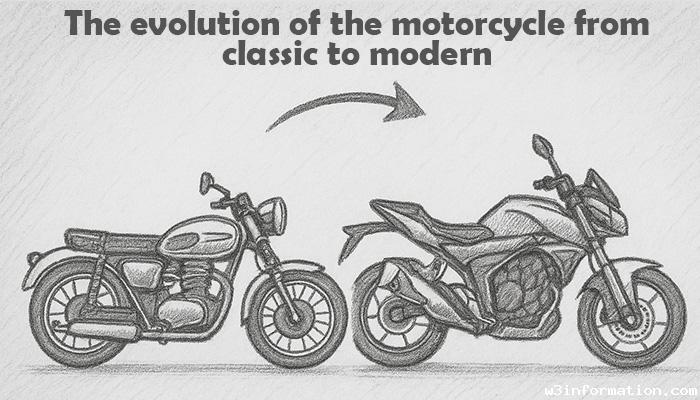The Evolution of the Motorcycle: From Classic to Modern
The development of motorcycles has progressed significantly from their late 19th-century origins. A basic motorized bicycle transformed into a versatile transportation system that combines engineering mastery and cultural importance with innovative design. The transition from classic to modern motorcycles demonstrates how advances in technology and style and changing societal demands unfolded through history.
The Early Days: The Birth of the Motorcycle:
Gottlieb Daimler and Wilhelm Maybach created the first motorcycle known as the "Reitwagen" in 1885 which was a gasoline-powered two-wheeler with a wooden frame. The early 1900s marked the beginning of mass production by Harley-Davidson and Indian Motorcycle which created machines that enthralled the public with their speed and sense of freedom.
The Classic Era: 1920s to 1960s
Iconic motorcycle brands and designs emerged during this period to define the appearance and experience of motorcycles. British companies Triumph, Norton and BSA brought out fashionable motorcycles with powerful engines and chrome detailing.After World War II American motorcycles such as the Harley-Davidson Knucklehead and Indian Chief became powerful symbols of rebellion and adventure as returning soldiers adopted motorcycle riding as both a hobby and a lifestyle.

Technological Advancements: 1970s to 1980s
Japanese manufacturers Honda, Yamaha, Suzuki, and Kawasaki entered the market and transformed the industry during the 1970s. These companies transformed the motorcycle industry by producing dependable motorcycles that delivered high performance at affordable prices. Honda set new standards for motorcycle capabilities with its CB750 which featured a four-cylinder engine combined with disc brakes and electric start. The emergence of sport bikes represented a fusion of rapid acceleration capabilities with advanced engineering techniques.
Modern Motorcycle Evolution from 1990s to Today:
Today’s motorcycles showcase cutting-edge technology together with streamlined designs and improved safety mechanisms. Many motorcycle models now feature electronic fuel injection, ABS braking systems, traction control, and digital displays as standard equipment. Today's motorcycle market offers riders an unprecedented range of options with categories including sport bikes, cruisers, adventure bikes, and electric motorcycles. Ducati, BMW, KTM, and Royal Enfield maintain their heritage while continuing their innovation efforts.
The Future: Electric and Smart Bikes
Motorcycles are moving towards sustainable practices and intelligent technology for the future. Zero Motorcycles together with Energica and Harley-Davidson's LiveWire product line stands out as pioneers in electric motorcycle development. Electric motorcycles provide riders with a silent and emission-free experience thanks to their impressive torque. Smartphone app integration alongside GPS navigation and rider assistance systems improves motorcycle intelligence and safety.
Conclusion:
The history of motorcycles from their origin as motorized bicycles to their present as advanced machines represents a fusion of technological progress with the human desires for freedom and passion. The timeless appeal of motorcycles persists as they connect people with both historic vintage models and high-performance sport bikes while bridging man, machine, and the open road.
 How to Balance School and Extracurricular Activities
How to Balance School and Extracurricular Activities
 Ways to Stay Motivated Throughout Your Academic Journey
Ways to Stay Motivated Throughout Your Academic Journey
 How to Prepare for College Admissions: A Complete Guide
How to Prepare for College Admissions: A Complete Guide
 The Benefits of Learning a Second Language
The Benefits of Learning a Second Language
 Why Emotional Intelligence Should Be Taught in Schools
Why Emotional Intelligence Should Be Taught in Schools
 The Future of Higher Education: Trends to Watch
The Future of Higher Education: Trends to Watch